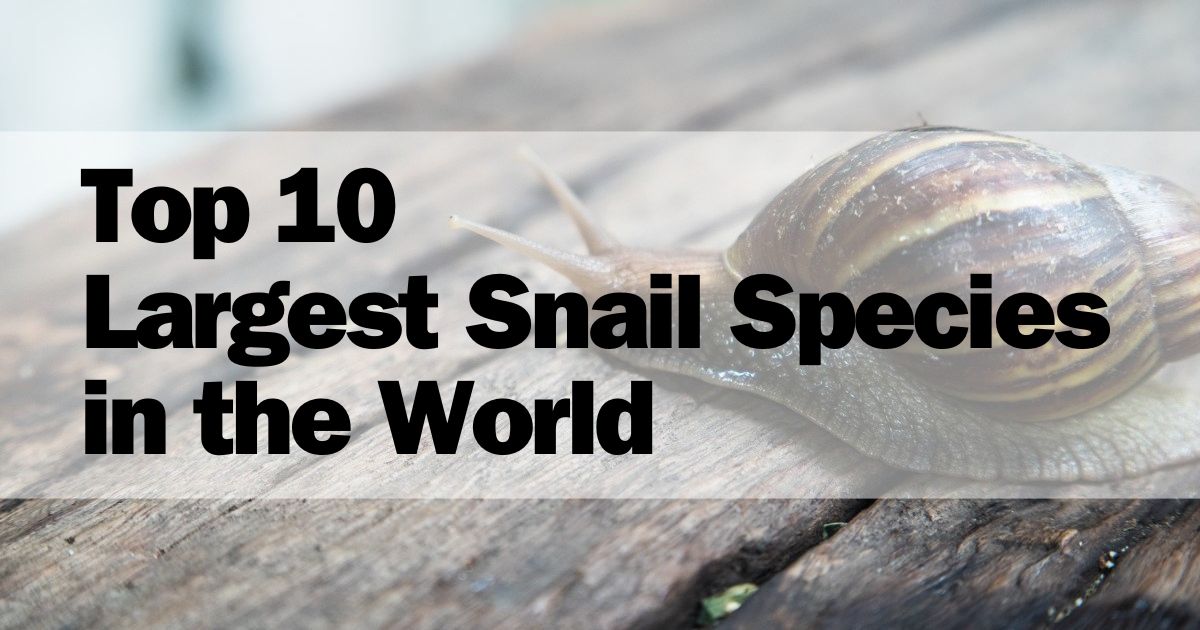Snails, often overlooked due to their slow pace and unassuming presence, are among the most diverse groups in the animal kingdom. From tiny garden snails to their gigantic cousins, these creatures are fascinating not only for their ecological roles but also for their impressive sizes. In this exploration, we delve into the world of the largest snail species on Earth, highlighting their unique characteristics and the environments they inhabit.
10. Decollate Snail (Rumina decollata)
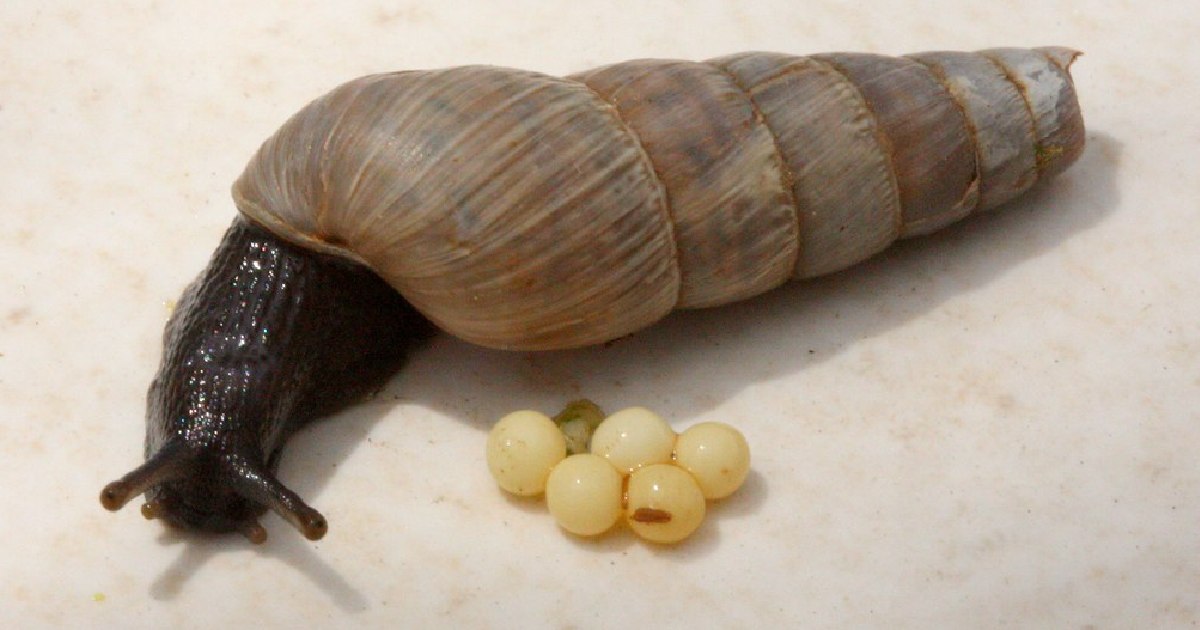
- Size: Up to 3.8 cm (1.5 inches)
- Location: Mediterranean region
- Key Features: Predatory habits, used in gardens to control pest snails
The Decollate Snail, albeit smaller than the others, is an important garden pest controller. This Mediterranean snail eats other snails to control garden pests. Its unusually long, slender shell often has a decollated or fractured top.
Gardeners appreciate the Decollate Snail for its appetite for common pest snails, introducing it into floral and vegetable gardens as a biological control agent. This practice highlights the snail’s utility in human environments. Thus, the ecosystem can be balanced by controlling harmful snail populations without the need for chemical pesticides.
9. Cuban Land Snail (Polymita picta)

- Size: Up to 6 cm (2.4 inches)
- Location: Cuba
- Key Features: Considered one of the most beautiful land snails
The Cuban Land Snail is known for its vividly colored shell. It is often called the world’s most beautiful land snail. Found exclusively in the forests of Cuba, this small yet striking snail feeds on fungi and plant matter, contributing to the decomposition and nutrient cycles within its ecosystem.
Its bright shell colors vary significantly, ranging from vibrant yellows and reds to deep blues and greens, providing camouflage among the rich foliage and flowers of its habitat. Despite its beauty, the Cuban Land Snail faces threats from habitat loss and the illegal pet trade, which prizes its colorful shell. Conservation efforts are crucial to preserving this visual marvel for future generations, ensuring that it continues to thrive in its native Cuban forests.
8. Rosy Wolf Snail (Euglandina rosea)
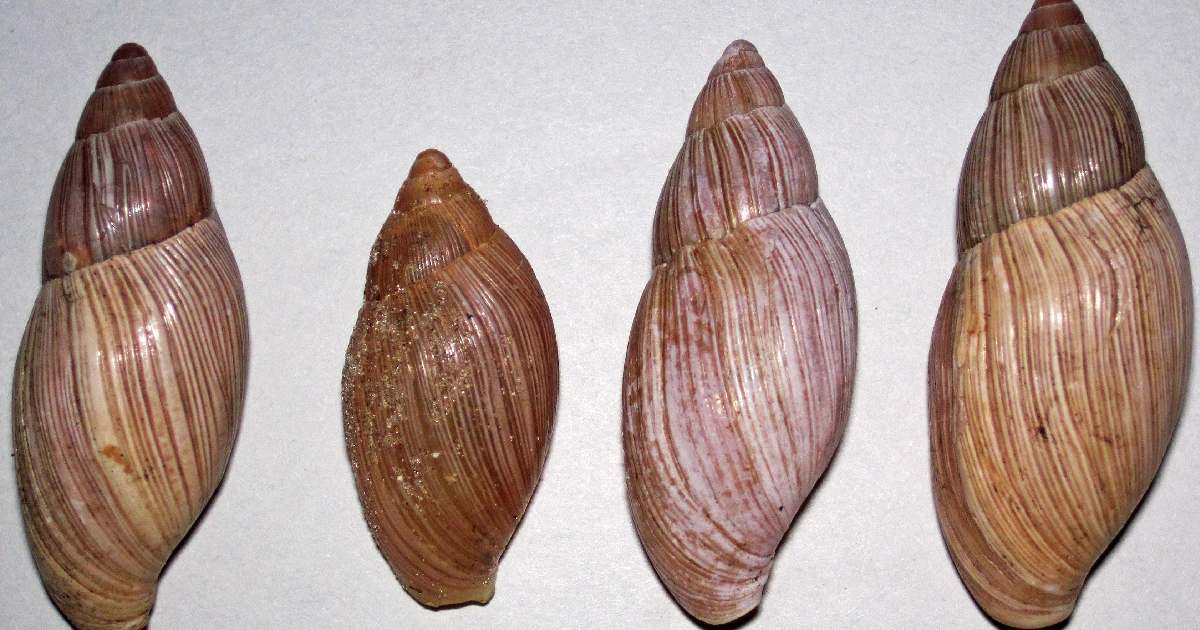
- Size: Up to 6.6 cm (2.6 inches)
- Location: North America
- Key Features: Known for hunting other snails
The Rosy Wolf Snail, while not the largest, is notable for its predatory behavior and distinctive pinkish shell. Native to North America, this snail hunts and consumes other smaller snails, using its keen sense of smell to track them down. This behavior has made it a subject of both admiration and concern, as it can impact native snail populations when introduced into new environments.
Their original purpose was to keep invading snail species in check. The Rosy Wolf Snail’s introduction to Hawaii has led to native, non-target snail species declining. This has made its employment as a regulating agent questionable, emphasizing the challenges of ecosystem management and the effects of bringing predators to new areas.
7. Burgundy Snail (Helix pomatia)
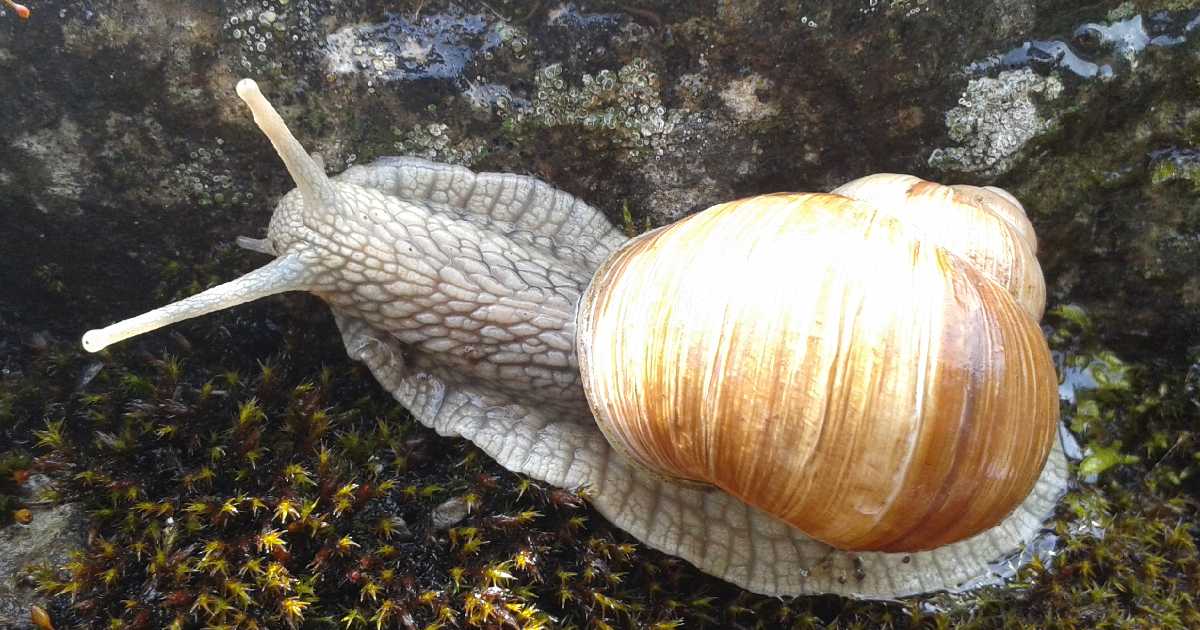
- Size: Up to 10 cm (4 inches)
- Location: Europe
- Key Features: Edible and highly prized in French cuisine, known as “escargot”
The French Burgundy Snail (Helix pomatia) is renowned for its size and deliciousness. This European species bites on leaves, fruits and vegetables, and flowers in grapevines, landscaping, and woodlands. The Burgundy Snail’s spiraling shell protects it from attackers and dangers to the environment.
In culinary circles, the Burgundy Snail is highly valued for its tender flesh. Leading to its cultivation in snail farms throughout Europe. The popularity of escargot has prompted careful management and conservation efforts to ensure sustainable populations amidst growing demand.
6. Roman Snail (Helix pomatia)

- Size: Up to 10 cm (4 inches)
- Location: Europe
- Key Features: Protected in many parts of Europe due to its declining population
Roman Snails, another page huge European species, are similar to Burgundy Snails but with thicker, rounder shells. Species like this snail-like to live in grassy fields and woody hillsides because the calcium-rich soils help their shells grow strong. The Roman Snail is also an essential part of European biodiversity.
It serves as prey for various mammals and birds. Many European countries currently preserve the Roman Snail due to habitat degradation and over-collection for gourmet use. Conservation of habitat and legal protections enable this species’ survival in its natural surroundings.
5. Giant Ghana Snail (Archachatina marginata)
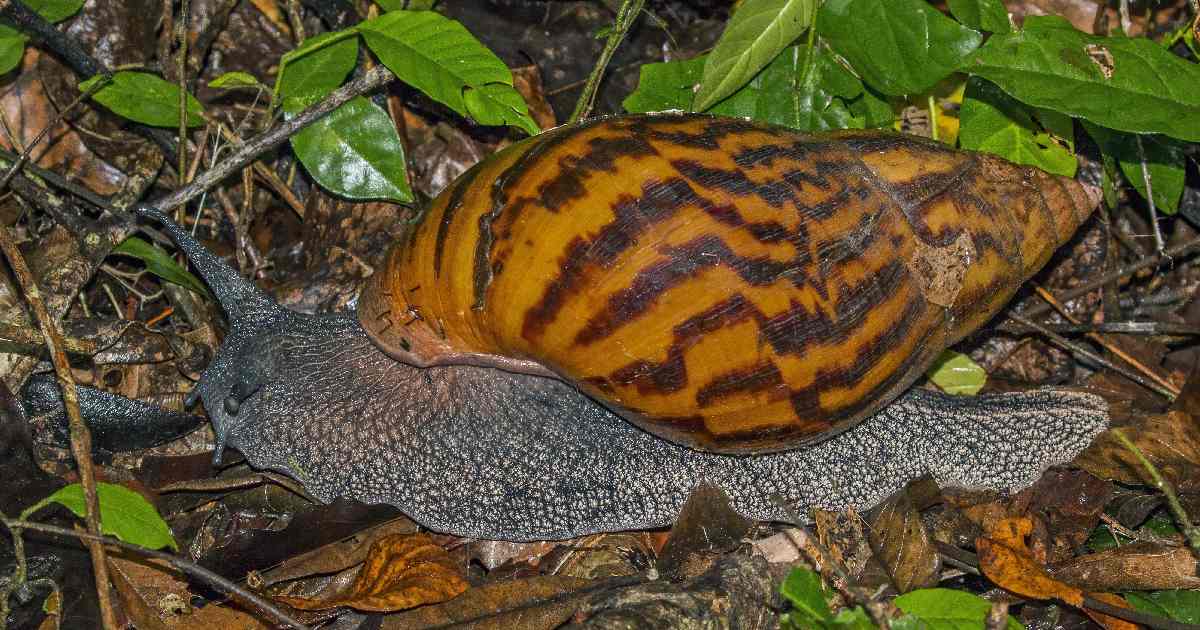
- Size: Up to 15 cm (6 inches)
- Location: Western Africa
- Key Features: Larger species of land snails in Africa
The Giant Ghana Snail, closely related to the Giant African Snail, is renowned for its beautiful, banded shell and impressive size. Native to Western Africa, this snail thrives in wet, tropical climates where it can find ample vegetation for feeding. Its diet is predominantly herbivorous, encompassing a wide range of leaves, flowers, and fruits.
This species is crucial for the local ecosystems, as it helps in the decomposition process and nutrient cycling. Despite its beneficial ecological roles, the Giant Ghana Snail must be carefully managed in non-native environments. To prevent it from becoming invasive and disrupting local habitats.
4. Giant Panda Snail (Hedleyella falconeri)
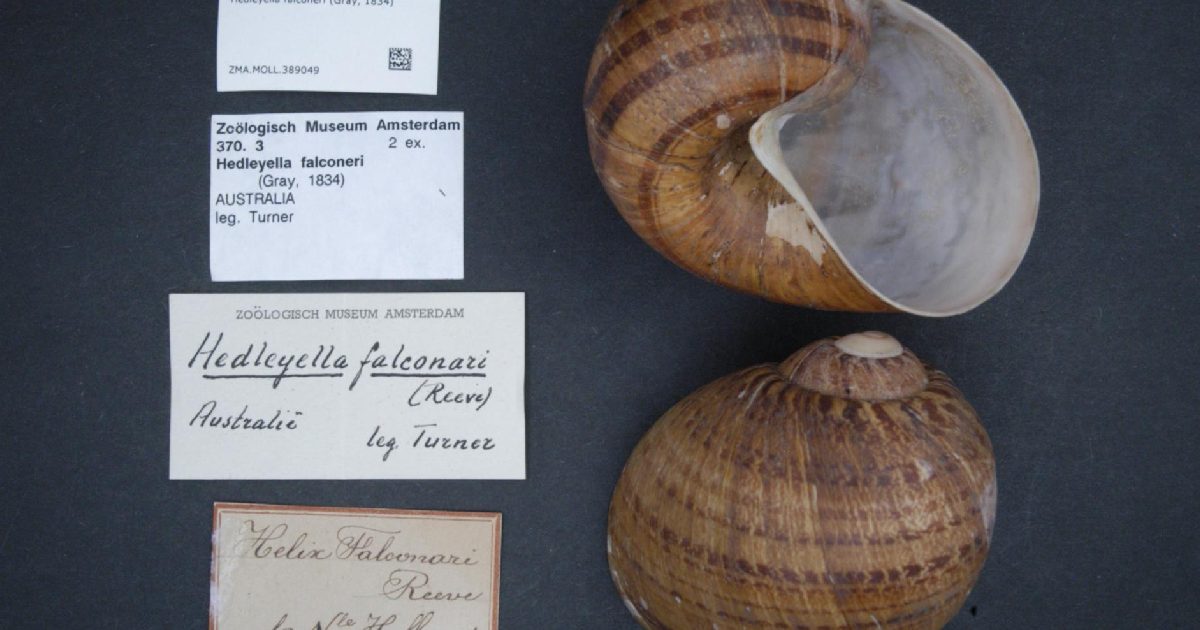
- Size: Up to 18 cm (7 inches)
- Location: Eastern Australia
- Key Features: Biggest snail in Australia
The Giant Panda Snail, identified after its panda-patterned body, is Australia’s largest native land snail. This Eastern Australian tropical snail favors damp, leaf-littered forest floors. Algae and rotting plants are its main diet.
Its enormous shell defends it from predatory animals, helping it survive. This species is remarkable for its stature and ecological role in recycling nutrients in the dense forest ecosystem. Giant Panda Snails promote topsoil by eating fungi and decomposing organic matter, thereby enhancing forest health and maintenance.
3. African Giant Snail (Lissachatina fulica)
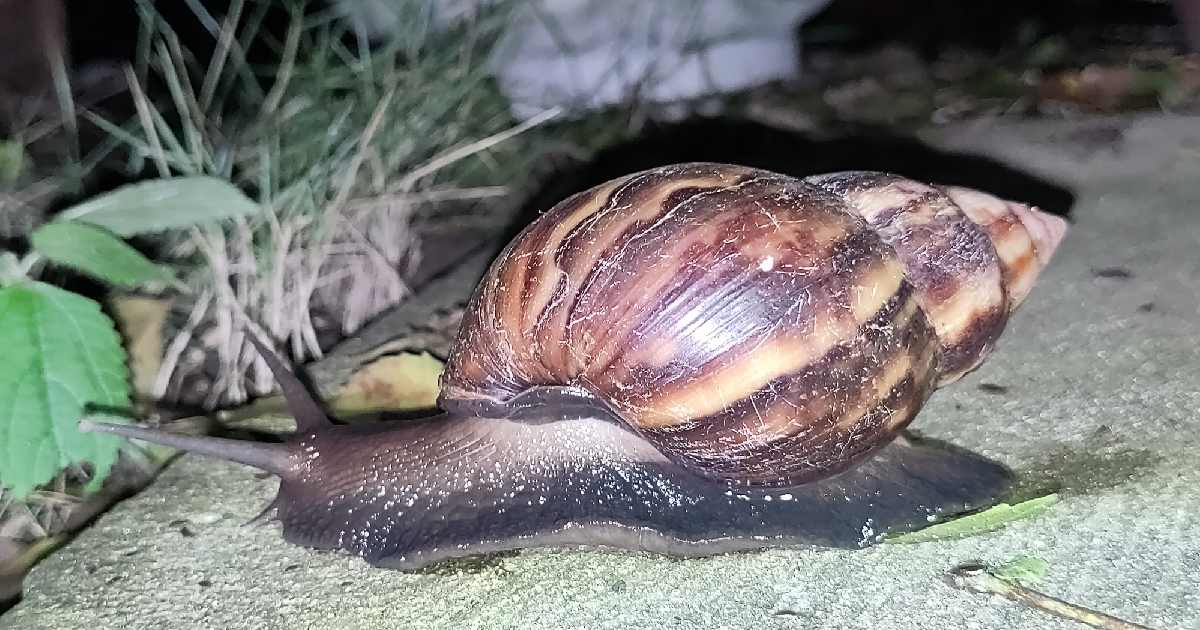
- Size: Up to 18 cm (7 inches)
- Location: Originally from East Africa
- Key Features: Has male and female reproductive organs
A close relative of the Giant African Land Snail, the African Giant Snail is notorious for its size. The extensive damage it can cause to crops and native plants. Despite its African origins, this snail has become an invasive species in many tropical and subtropical regions, thriving in environments without natural predators.
Its rapid reproduction and voracious appetite allow it to outcompete native snail species and devastate agricultural areas. The control and management of the African Giant Snail are major concerns in regions where it has been introduced. Efforts to curb its spread include public awareness campaigns, pest control measures, and research into more effective management strategies to protect local biodiversity and agriculture.
2. Cyclophoroidea
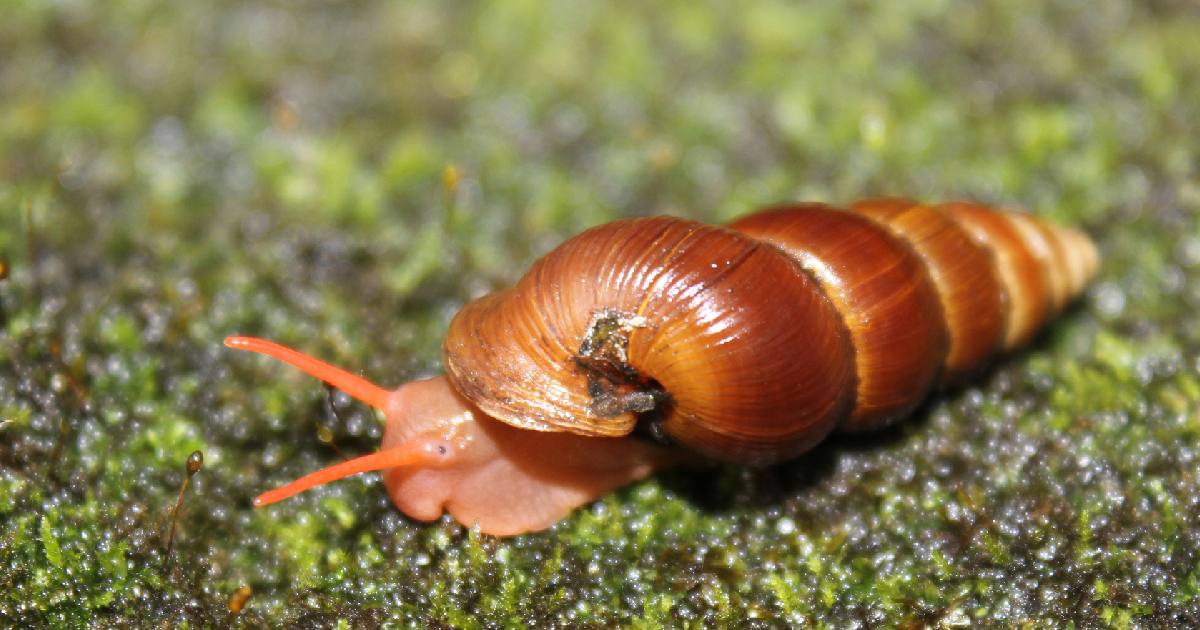
- Shell Size: Up to 10 cm in diameter
- Location: Tropical and subtropical regions worldwide
- Key Features: Spiral shells, land-dwelling
Cyclophoroidea represents a superfamily of land snails known for their impressive shell sizes and unique adaptations. These types of snails thrive in abundant rainforests and humid, secluded locations in tropical and subtropical countries. Its spiraling shells, which can exceed 10 cm in length, absorb and retain humidity, which is essential for land life.
Food for cyclophoroidea snails includes decaying plant material, fungi, and small insects. Their capacity to eat various foods helps their natural systems cycle nutrients and build soil. Considering their great size, snails can navigate their complex habitats utilizing their excellent sense of taste and smell to find food and partners.
1. Giant African Snail (Achatina fulica)

- Size: Up to 20 cm (8 inches)
- Location: Originally from East Africa
- Key Features: Highly invasive, capable of eating over 500 different types of plants
The Giant African Snail (Achatina fulica) ranks as one of the largest snails found in the world. The tropical Sub-Saharan African snail is capable of developing a 20-cm shell, which makes it the largest among its mollusk relatives. It thrives in its native habitat as well as as a vector of invasion in many tropical locations owing to its big size and famished eating.
These Giant African Land snails can eat almost any plant, including crops, causing significant financial harm in invading areas. The Giant African Snail’s versatility renders it difficult to manage, especially in areas without natural predators. Their adverse effect on agriculture is offset by their involvement in soil enrichment by breaking away organic matter.
Conclusion
The largest snail species in the world offer a glimpse into the complexity and variety of Earth’s ecosystems. From the large snails that challenge global agriculture to the beautiful and beneficial garden helpers, these native snails play diverse and significant roles in their habitats. Understanding and appreciating their contributions and other species helps highlight the importance of conservation efforts, ensuring that these fascinating creatures continue to thrive and balance the natural world.
Frequently Asked Questions (FAQs)
What is the largest species of snail in the world?
The largest species of snail is the Giant African Snail (Achatina achatina). It holds the title of the world’s biggest land snail, known for its impressive size and distinctive shell.
How big is a giant African snail?
A Giant African Snail can reach up to 12 inches (30 cm) in length. Its shell alone can grow to around 8 inches (20 cm), and it can weigh up to 2 pounds (0.9 kg).
Are giant snails rare?
Giant African Snails are not particularly rare in their native habitats, such as East Africa. However, their popularity as pets has led to concerns over their invasive potential, affecting their status in non-native regions.
What is the most beautiful snail in the world?
Many consider the Polyscirta elongata, also known as the Blue Polyscirta, to be one of the most beautiful snails. Its vibrant blue shell and intricate patterns make it a standout in the tiny snails’ world.
Why are giant snails illegal?
Giant African Snails are illegal in many places due to their potential to become invasive species. They can cause significant damage to local agriculture and ecosystems, leading to strict regulations on their import and ownership.

